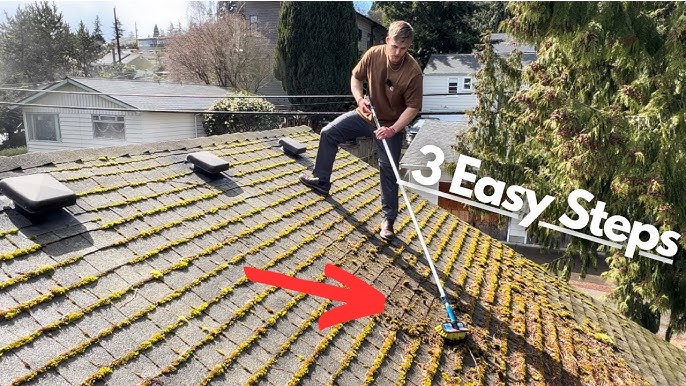Understanding Moss on Roofs
Moss is a non-vascular plant that thrives in damp, shaded environments. On roofs, it often appears as green, carpet-like clumps. Its growth is primarily encouraged by consistent moisture, lack of direct sunlight, and the presence of organic debris which provides a nutrient base.
- Moisture: Areas that remain damp for extended periods, such as those shaded by trees or on north-facing slopes, are prime locations for moss.
- Shade: Insufficient sunlight prevents a roof surface from drying out quickly, creating an ideal habitat.
- Debris: Accumulations of leaves, twigs, and dirt trap moisture and provide nutrients for moss spores.
- Roof Material Porosity: Older or more porous roofing materials can retain more moisture and offer a better surface for moss to establish.
Problems Caused by Moss
While seemingly innocuous, moss can cause significant issues for a roof's integrity and longevity:
- Water Retention: Moss acts like a sponge, holding substantial amounts of water against the roof surface. This constant moisture can accelerate the degradation of roofing materials, especially asphalt shingles, leading to curling, blistering, and granule loss.
- Freeze-Thaw Damage: In colder climates, water absorbed by moss can freeze and expand, potentially lifting shingles, cracking tiles, or creating fissures in the roofing material.
- Structural Damage: As moss thickens, its root-like structures (rhizoids) can penetrate and lift shingles, allowing water to seep underneath and potentially damage the roof deck and underlying structure, leading to leaks.
- Gutter Blockages: Dislodged moss can wash into gutters and downspouts, causing clogs, water backup, and potential overflow that can damage fascia, soffits, and foundations.
- Reduced Roof Lifespan: The cumulative effect of these issues can significantly shorten the functional lifespan of a roof.
- Aesthetic Concerns: Heavy moss growth can make a property look unkempt and poorly maintained.
Moss Removal Strategies
Safety First: Working on a roof is inherently dangerous. Always prioritize safety by using appropriate fall protection, ensuring ladders are secure, and considering professional help if you are uncomfortable or inexperienced.

- Manual Removal: For light moss growth, gentle brushing with a long-handled, soft-bristle brush can be effective. Brush downwards to avoid lifting shingles. Avoid aggressive scraping, which can damage shingles. This method is labor-intensive.
- Chemical Treatments:
- Products specifically formulated for roof moss removal are available. These often contain active ingredients like potassium salts of fatty acids, zinc chloride, or sodium hypochlorite (bleach) solutions (use diluted and with extreme caution, as bleach can damage some roofing materials and surrounding vegetation).
- Application: Always follow manufacturer instructions regarding dilution, application, dwell time, and rinsing. Protect surrounding plants and surfaces from runoff.
- Considerations: Some chemicals can be corrosive or harmful to the environment. Choose products carefully and consider their impact.
- Pressure Washing (Use with Extreme Caution): Generally, pressure washing is not recommended for asphalt shingle roofs as it can strip away protective granules and significantly shorten shingle life. If considered for other roof types (e.g., some metal or tile roofs), use the lowest possible pressure setting, a wide fan tip, and spray downwards at an angle, never directly upwards under shingles. Professional consultation is highly advised before attempting this method.
Preventing Moss Regrowth
Proactive measures are key to keeping your roof moss-free:
- Increase Sunlight: Trim overhanging tree branches to allow more sunlight to reach the roof surface, promoting faster drying.
- Regular Debris Removal: Keep the roof clear of leaves, pine needles, and other organic debris that can trap moisture and provide a food source for moss. This includes regular gutter cleaning.
- Install Metallic Strips: Strips of zinc or copper installed along the roof ridge can help prevent moss growth. As rainwater washes over these metals, it releases metallic ions that are inhospitable to moss and algae, creating a protective effect down the roof slope.
- Choose Moss-Resistant Shingles: When reroofing, consider shingles that are manufactured with copper granules or other moss-inhibiting properties.
- Regular Inspections: Periodically inspect your roof for early signs of moss growth, allowing for easier removal before it becomes widespread.
- Improve Attic Ventilation: Proper attic ventilation can help regulate roof temperature and reduce moisture buildup on the underside of the roof deck, which indirectly helps keep the surface drier.









